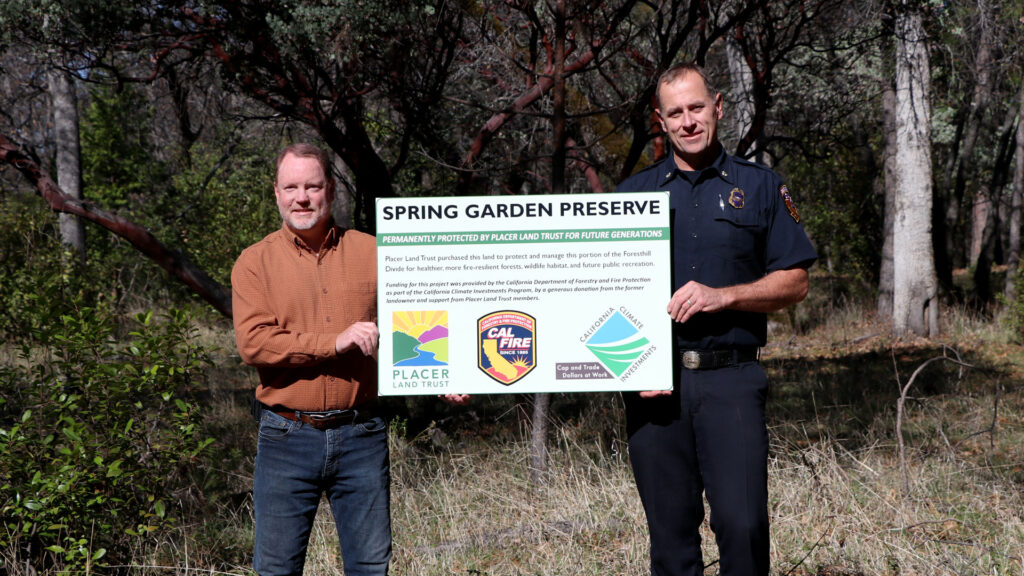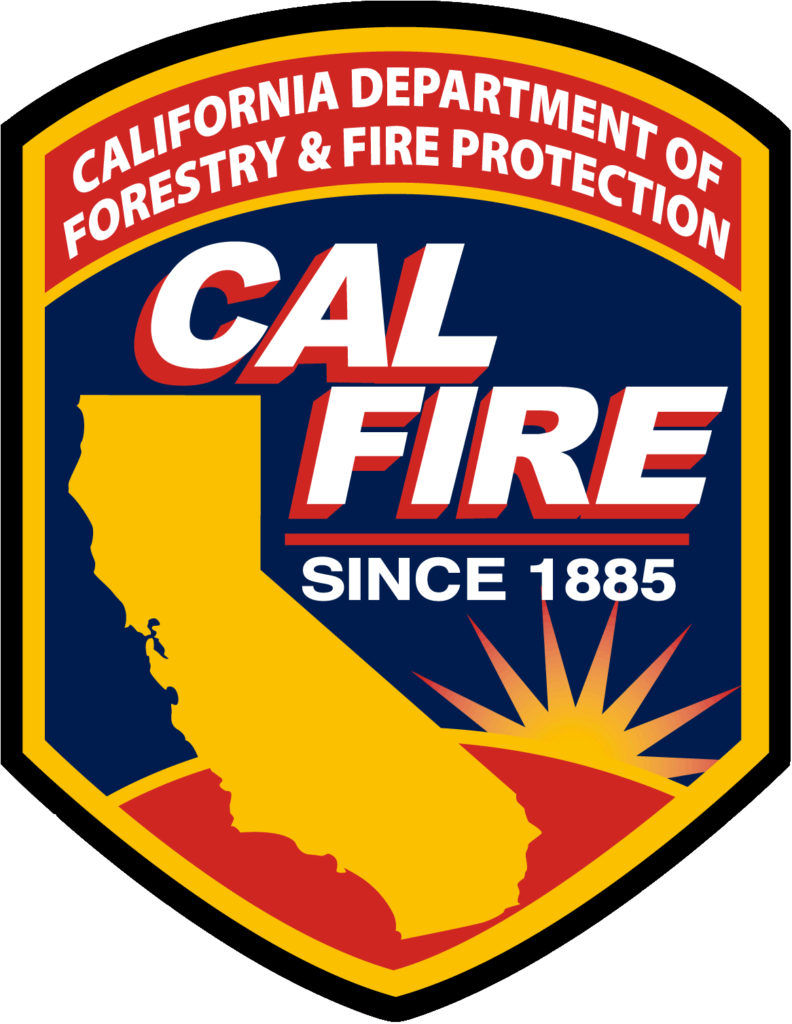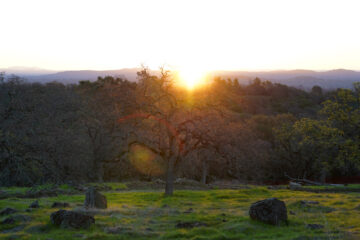The 193-acre Spring Garden Preserve is located on the Foresthill Divide near the community of Foresthill. Spanning the canyons and watersheds of the North Fork and Middle Fork of the American River, this preserve was permanently protected in June 2020. The property was initially marketed for development, given its easy access, gentle topography, views of the rivers, and proximity to other residential developments. Instead, the landowner worked with Placer Land Trust to ensure that this forested land will continue to be open space forever. The conservation of forests, clean water sources, cultural history, and wildlife habitat will benefit the public for generations to come.
“The Spring Garden property was at risk for development, so it was import to find a partner that valued multiple public benefits as much as we do,” says Jeff Darlington, Placer Land Trust Executive Director. “Our search for funding led us to CAL FIRE, where our objectives overlapped — to protect healthy forests in the Sierra foothills.”
The property’s position along a major roadway and atop the Foresthill Divide made it ideal for conservation. “This project stood out because of three characteristics that we look at when scoring projects,” explains Stewart McMorrow, Deputy Chief of Forestry Assistance for CAL FIRE. “We look at threat, strategic value, and importance. From a strategic perspective, this is a large property positioned between a couple of rural residential neighborhoods and connects to a Wild and Scenic river corridor. It had an immediate threat — it was on the market, and was able to be broken up into residential lots, which would be vulnerable to wildfire. And finally, the importance of this property centers around the fact that this is a transitional forest between lower hardwood into higher elevation conifer forest.” These types of forests tend not to receive commercial forest management because of the lack of commercially viable lumber in this elevation zone.
“One of our biggest challenges is to have consistent management across a larger landscape,” says McMorrow. “Spring Garden Preserve is an excellent example of a piece of property that can now be managed for both wildfire resilience, forest health, and community safety. Actively managed forests are simply more resilient to wildfire.”
Spring Garden Preserve’s forest is unusually diverse, with large stands of mature madrone trees alongside huge blue and black oaks, Douglas fir, and Ponderosa pine. Funding for this project was provided by the California Department of Forestry and Fire Protection as part of the California Climate Investments Program. In line with program goals, the preserve will be managed to support ecologically-healthy and fire-resistant forests, reducing risk to adjacent residential properties and neighborhoods.

The Spring Garden Preserve Fee Title Acquisition is part of California Climate Investments, a statewide program that puts billions of cap-and-trade dollars to work reducing GHG emissions, strengthening the economy, and improving public health and the environment—particularly in disadvantaged communities. The cap-and-trade program also creates a financial incentive for industries to invest in clean technologies and develop innovative ways to reduce pollution.
California Climate Investment projects include affordable housing, renewable energy, public transportation, zero-emission vehicles, environmental restoration, more sustainable agriculture, recycling and much more. At least 35 percent of these investments are located within and benefiting residents of disadvantaged communities, low-income communities, and low-income households across California. For more information, visit the California Climate Investments website at: www.caclimateinvestments.ca.gov.




